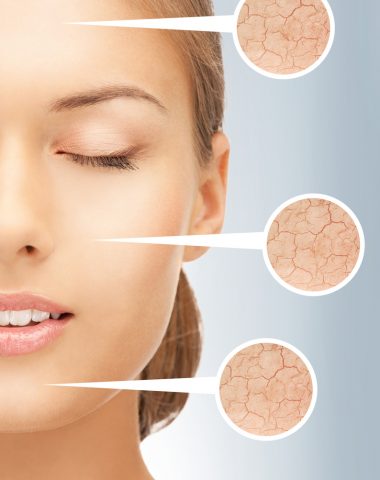Seborrheic Dermatitis: Symptoms & Treatments
Seborrheic dermatitis, a type of skin condition that most often causes facial dryness and scalp itchiness, affects millions of children and adults in Canada.
It can be tricky to recognize or diagnose seborrheic dermatitis because the skin reactions it triggers mimic those caused by similar conditions like psoriasis, other forms of eczema or even allergic reactions.
Seborrheic dermatitis commonly affects adults between the ages of 30-60 and infants under 3 months.
What Is Seborrheic Dermatitis
Seborrheic dermatitis is defined as a chronic, recurrent, inflammatory skin condition characterized by erythema and skin flaking. It’s actually a form of eczema and is also known as seborrheic eczema.
It usually causes symptoms like itching, skin dryness or oiliness, and other common changes in skin texture, such as scalp dandruff. Unlike many people assume, seborrheic dermatitis is not contagious.
When an adolescent or adult has seborrheic dermatitis, symptoms can come and go for the rest of their life. Very few cases will clear up without treatment. Flare-ups come without warning, often triggered by cold, dry weather or periods of stress.
The parts of the body most likely to develop itchiness and other symptoms include:
- Face – dryness, and redness usually form on the forehead near the skin folds, eyebrows and front hairline
- Scalp – dandruff is regarded as a mild, noninflammatory form of seborrheic dermatitis. More than half of patients with this condition develop symptoms on the scalp.
- Ears
- Upper chest
- Back
- Near the neck or collarbone
- Any bodyfold, such as near the groin
What Causes Seborrheic Dermatitis?
Doctors don’t know the exact cause of seborrheic dermatitis. It appears that many factors work together to cause this inflammatory skin condition, including genes, yeast that is normally present on our skin, living in a cold, dry climate, stress and a person’s overall health.
Seborrheic dermatitis is not contagious. It is not caused by a lack of hygiene and it is not an allergic reaction. Although this condition can be uncomfortable and even embarrassing, it is not harmful to your health.
Psoriasis Vs. Seborrheic Dermatitis
Both of these skin conditions may affect the scalp, which is why they are often confused.
One of the major differences between seborrheic dermatitis and scalp psoriasis is their appearance. Scalp psoriasis appears powdery and has a silver sheen, whereas seborrheic dermatitis is more likely to appear yellow and greasy.
What Treatments Are Effective For Seborrheic Dermatitis?
While there is no cure for seborrheic dermatitis, the right treatment can ease symptoms and make flare-ups more manageable. The best type of treatment for each patient will vary based on age and where symptoms occur most often.
After checking your skin, discussing your symptoms, your health history, and your family history with seborrheic dermatitis, Dr. Rao will be able to determine the right course of treatment.
Book Your Consultation Today
Our team is committed to working with you to develop a synergistic approach for enhancing your skin’s health. Dr. Rao has extensive experience and expertise in skin care treatments in Edmonton. Book your consultation with us today!

